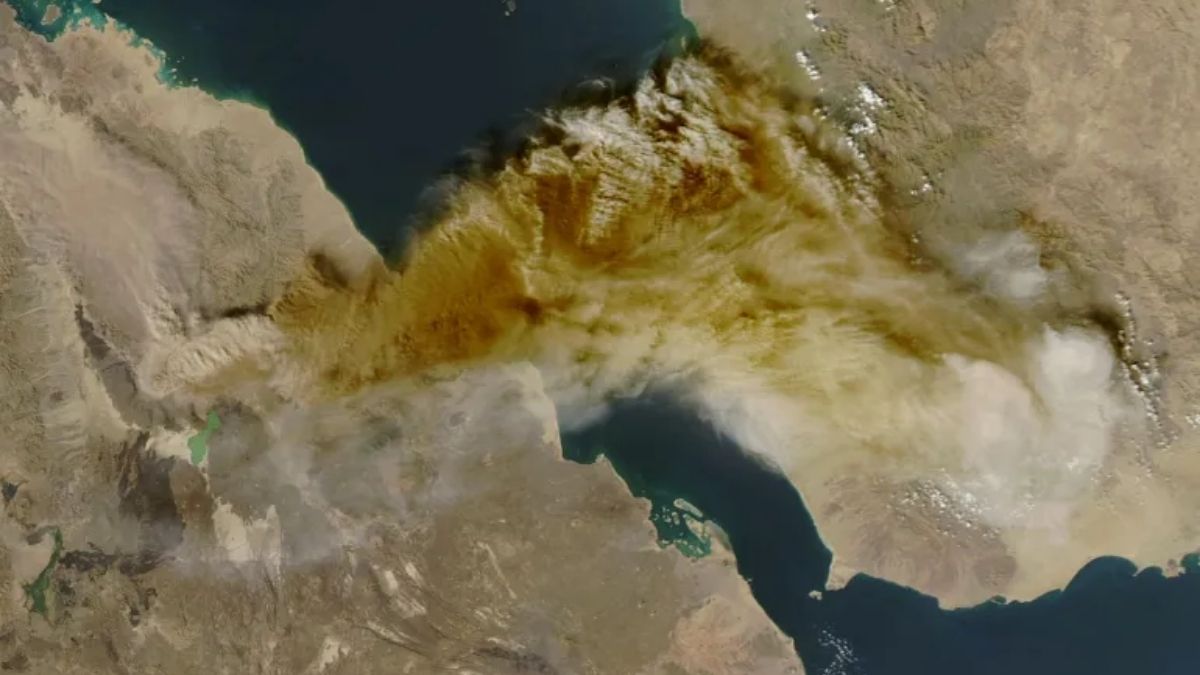Ethiopia’s Hayli Gubbi volcano erupts for first time in 12,000 years, sending ash across regions
Ethiopia’s Hayli Gubbi volcano has erupted for the first time in nearly 12,000 years, sending ash as high as 14km and drifting across the Red Sea toward Yemen, Oman and India. No casualties have been reported, but aviation and local communities face significant disruption.

- The Hayli Gubbi volcano in Ethiopia erupted on 23 November 2025 for the first time in nearly 12,000 years.
- Ash clouds spread across the Red Sea toward Yemen, Oman and parts of India, affecting aviation operations.
- Local communities in Afar face economic disruption, though no casualties have been reported.
ADDIS ABABA, ETHIOPIA — A volcano in Ethiopia’s north-eastern Afar region erupted on Sunday, 23 November 2025, for the first time in nearly 12,000 years, sending thick plumes of ash up to 14 km (9 miles) into the sky and across the Red Sea toward Yemen and Oman.
The Hayli Gubbi volcano, located about 800 kilometres (500 miles) northeast of Addis Ababa, erupted for several hours on Sunday morning, blanketing the nearby village of Afdera in ash.
According to Al Jazeera, citing the Toulouse Volcanic Ash Advisory Centre (VAAC) in France, no casualties were reported. The VAAC said ash clouds travelled as far as Yemen, Oman, India and northern Pakistan.

Residents described the eruption as sudden and intense. “It felt like a bomb had been thrown with smoke and ash,” said Ahmed Abdela, a resident of the Afar region.
Many people headed toward the Danakil desert — a popular tourist destination — became stranded on Monday as ash covered roads and parts of Afdera.
Local administrator Mohammed Seid said the eruption could have economic consequences for livestock herders.
“While no human lives and livestock have been lost so far, many villages have been covered in ash, and as a result, their animals have little to eat,” he said.
The volcano, which rises around 500 metres, sits along the East African Rift, a zone of significant tectonic activity.
The Smithsonian Institution’s Global Volcanism Program confirmed that Hayli Gubbi has no known eruptions during the Holocene, the geological epoch that began roughly 12,000 years ago.
Volcanologist Simon Carn of Michigan Technological University also noted that the volcano “has no record of Holocene eruptions.”
Authorities in Afar have not reported casualties or major infrastructural damage as assessments continue.
Ash Drifts Toward India, Aviation on Alert
Volcanic ash from the eruption is drifting toward India, prompting aviation authorities to issue safety advisories.
India’s Directorate General of Civil Aviation (DGCA) urged airlines to avoid affected airspace, warning that abrasive volcanic ash can damage aircraft engines.
When ash is ingested, molten particles can adhere to turbine blades, posing a risk of engine failure.
Flight operations in parts of India were affected on Monday as ash plumes reached the country’s airspace.
According to The Hindu, forecast models from the India Meteorological Department (IMD) indicated possible ash influence over Gujarat, Delhi-NCR, Rajasthan, Punjab and Haryana on Tuesday.
IMD Director General Mrutyunjay Mohapatra said the ash clouds were drifting toward China and were expected to clear by 7:30 p.m.
The IMD described Hayli Gubbi as a shield volcano that produced a plume rising to about 14 km (45,000 ft). Satellite models showed the ash spreading eastward across the Red Sea, the Arabian Peninsula and eventually the Indian subcontinent.



1 Comment